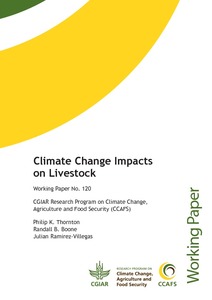CCAFS Baseline Survey Indicators for Borana/Yabero, Ethiopia
This document series compiles key indicators from the three levels of the baseline for each site. Indicators include: demography and basic site characteristics of each site, rainfall distribution, changes in farming practices and land management, income sources, food security and food
sources, asset ownership by households and involvement in organisations and more. This CCAFS baseline indicator document was developed for the CCAFS site at Borana/Yabero, in Ethiopia.










